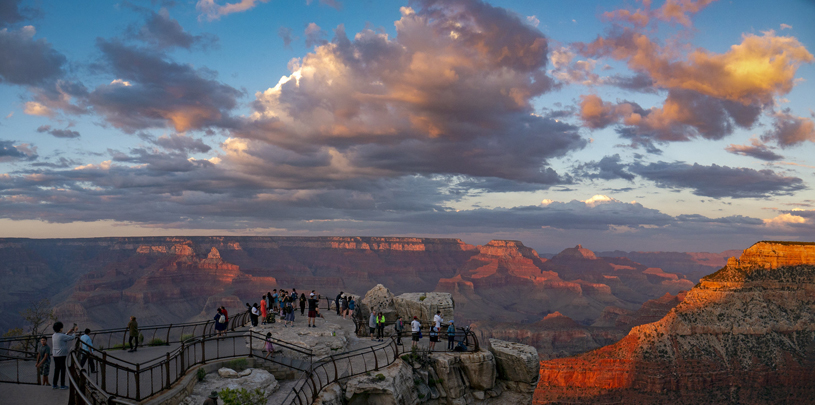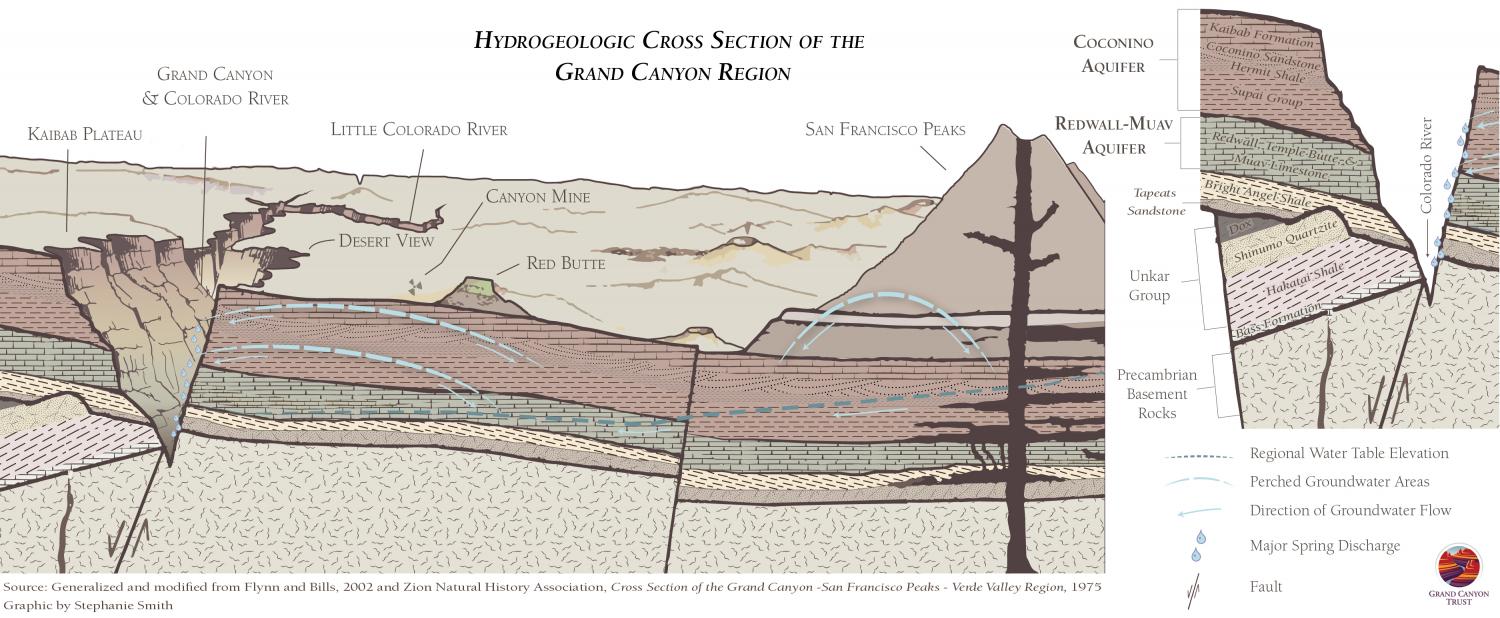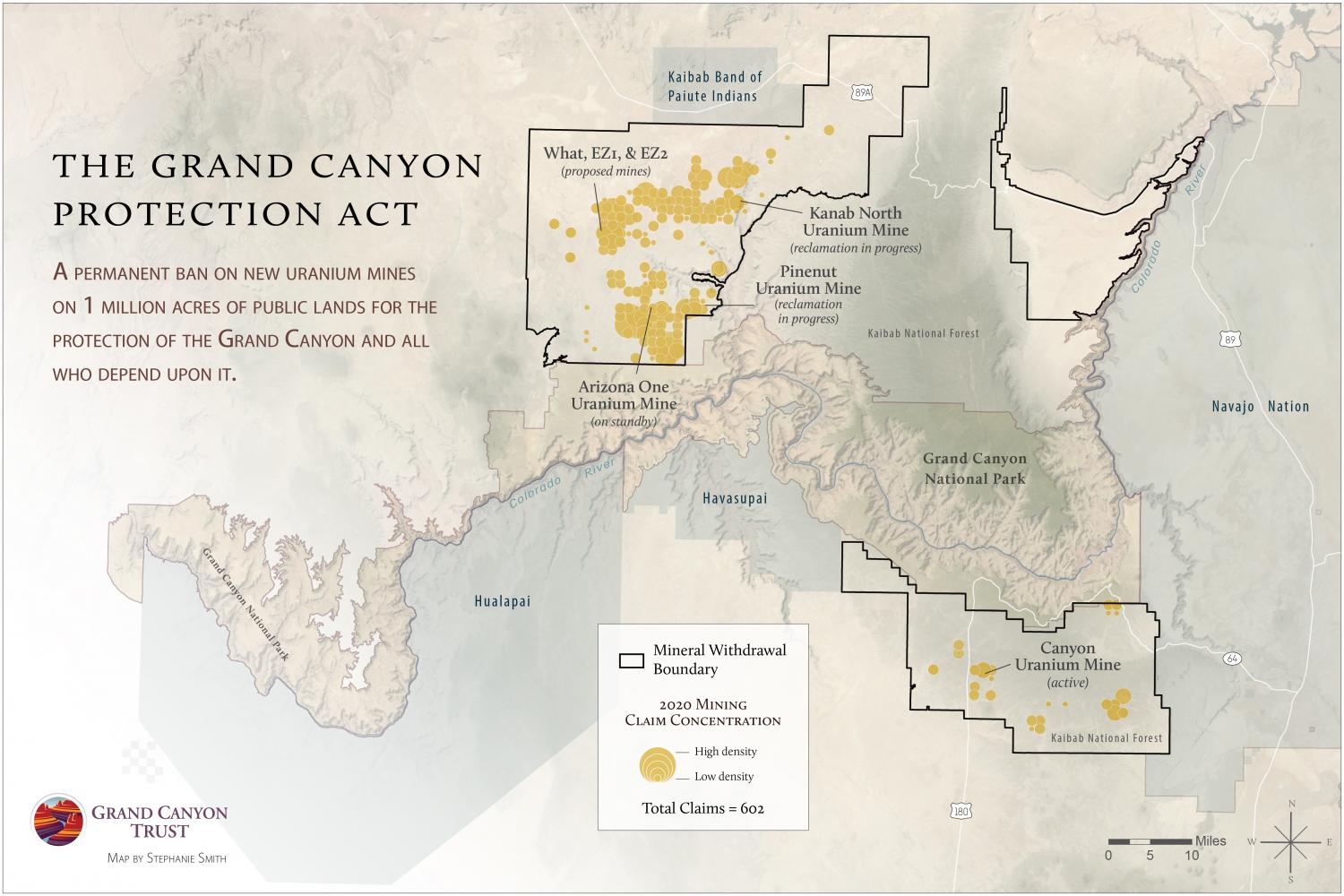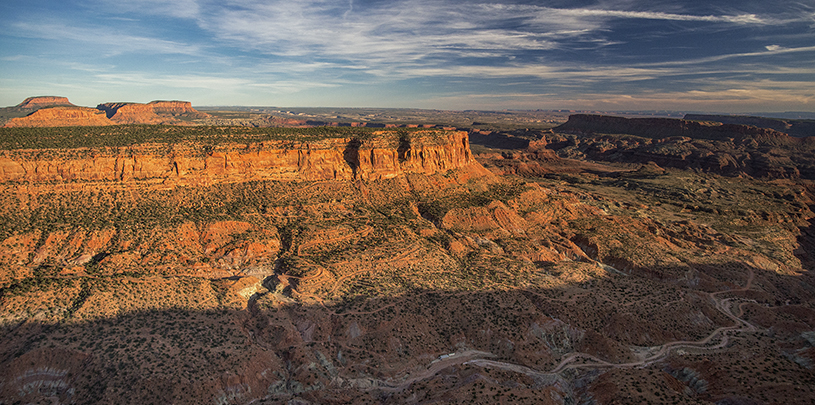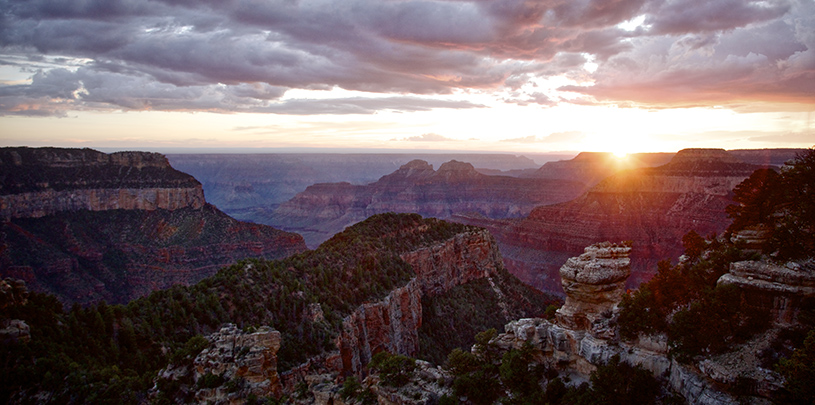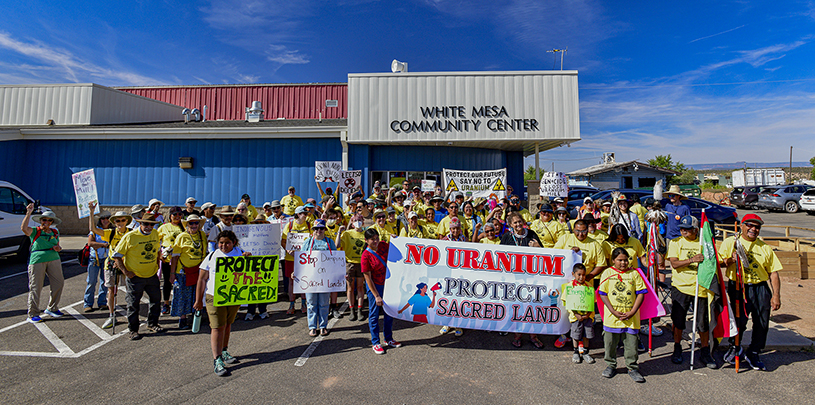by Amber Reimondo, Energy Director
In November 2021, the U.S. Geological Survey (USGS) published a study on the quality of water at 206 different sites in the Grand Canyon region. The study summarized results from testing 573 spring and well samples collected at those sites since 1981. Collecting groundwater samples in this vast and remote region is no small task, and understanding what they mean is more complicated still.
The study’s goal was to use as many water samples as researchers could get, given practical and financial limitations (without millions of dollars to drill monitoring wells they relied heavily on springs), in order to establish water quality at various sites in the Grand Canyon region. With these baselines in hand, scientists will be able to detect any future changes in water quality at those sites that might result from uranium mining activities.
In studying samples collected to-date (sample collection is still ongoing), researchers found that 5 percent of the sampled springs and wells have elevated levels of uranium and 73 percent of those are likely, though not conclusively, caused by past uranium mining operations.
What does this study mean?
We now have information on what water quality looked like at various times at 206 different sites in the region. One hundred and eighty of these sites are springs; the remaining 26 are existing wells. In the future, this information will allow the USGS to determine if water quality at any of these sites changes.
What doesn’t it mean?
Having this information does not allow anyone to conclude, as one mining company executive recently claimed, that so-called “modern uranium mining” does not impact groundwater. Groundwater flow paths in the Grand Canyon region are long, complex, and not well understood.
As the lead USGS researcher on the study pointed out, “[w]hat we know about the groundwater system in that area is that some of the flow paths are really long, so it can take an extensive amount of time to get from point A to point B, so if we’re looking for effects from uranium mines on groundwater resources, they might not show up at spring sites for hundreds, to possibly thousands of years.”
The study also does not identify contaminant sources. If water quality at any of these sites declines in the future, we will be able to note the change, but because the direction, how far, and how fast groundwater flows to those springs are such big unknowns, connecting that decline in groundwater quality to a specific source will be another task altogether.
And knowing that water quality has gone down also does not mean that it can be cleaned up. Cleaning uranium from groundwater is a complicated task in the best of settings. In the Grand Canyon region, where groundwater can be thousands of feet deep and flow paths not well understood, cleanup is likely to be virtually impossible.
Another reason to permanently ban mining
Groundwater uncertainties and risks are one reason among many that a permanent mining ban should be enacted in the Grand Canyon region.
Most importantly, the Grand Canyon region has been home to Indigenous peoples since time immemorial. Today, the Havasupai Tribe — whose members proudly call themselves “the Guardians of the Grand Canyon” — still physically resides within the canyon’s walls. The region holds deep cultural and spiritual significance for at least 11 sovereign tribal nations across what is today known as the American Southwest.
The Havasupai Tribe and many other tribal nations have worked tirelessly for many years to see a permanent mining ban in the region out of concern for the damage uranium mining has already caused to communities in the Southwest and could still cause to a region of such significance to their people.
‘Oh, you won’t see the contamination until hundreds of years from now.’ We’re not willing to take that risk. There’s only 757 of us left, and we just can’t risk that right now for the future of our children.
–Carletta Tilousi, Havasupai Tribal Council
Water security and drought
Another important reason is water security. In 2021, as Lake Powell and Lake Mead hit lows not seen since the reservoirs were filling, the federal government declared a first-ever water shortage on the Colorado River. The designation means water supply cuts for lower basin states like Arizona, and those cuts are projected to get worse. Supply cuts from the Colorado River will mean more reliance on groundwater. The bottom line? Every drop counts and no water resource is expendable.
The list goes on, from local and regional economies, to recreation. But the ultimate result is this: Congress must enact a permanent ban on uranium mining in this critical region. There is far too much at stake.
You can help
Help us by calling or emailing your senators today and asking them to help the Grand Canyon Protection Act, a bill that will permanently protect the Grand Canyon region from mining, finally become law.

